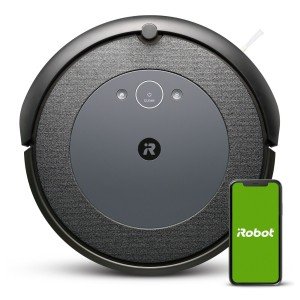The Rise of Robot Sweepers: Revolutionizing Household Cleaning
In the busy world of technology, robotic appliances have emerged as important companions in the mission for a cleaner home. Among these technological marvels, robot sweepers have actually gotten substantial appeal due to their ability to perform cleaning jobs efficiently while lessening human effort. This post explores the complexities of robot sweepers, their benefits, operating mechanisms, and their future in household cleaning.
What Are Robot Sweepers?
Robot sweepers, typically referred to as robotic vacuum cleaners, are self-governing gadgets developed to clean floors with very little human intervention. Equipped with different sensing units, brushes, and suction abilities, these smart gizmos browse through living areas, selecting up dust, dirt, and debris effectively. this link are available in different sizes and shapes, accommodating various cleaning requirements and floor types.
Secret Features of Robot Sweepers
Smart Navigation Systems:
- Many robot sweepers use advanced navigation systems such as LIDAR or camera-based mapping to create an in-depth map of the area they clean. These systems assist them navigate effectively and avoid barriers.
Set up Cleaning:
- Users can frequently program robot sweepers to run at particular times, making it easy to preserve a clean home without manual intervention.
Sensors and Detectors:
- Robot sweepers are equipped with sensors that allow them to spot dirtier locations and change their cleaning intensity appropriately. Some models can even identify stairs and ledges to avoid falling.
Compatibility with Smart Home Systems:
- Many robot sweepers can seamlessly incorporate with smart home communities, allowing voice command performances and push-button control by means of smart device apps.
Benefits of Using Robot Sweepers
Robot sweepers provide numerous benefits that make them interesting a wide variety of users:
Time-Saving:
- One of the most substantial advantages of robot sweepers is their capability to save time. Users can set their gadgets to clean while they participate in other activities, such as working or investing time with household.
Efficient Cleaning:
- With the ability to tidy under furniture and in tight areas, robot sweepers typically reach locations that standard vacuum cleaners can not, guaranteeing a thorough cleaning experience.
Minimized Physical Labor:
- Robot sweepers reduce the physical needs of cleaning, making them perfect for elderly individuals or those with mobility issues.
Constant Maintenance:
- Regularly scheduled cleanings can promote much better overall health and health, especially for individuals with allergies to dust or pet dander.
User-Friendly:
- Generally designed for ease of usage, robot sweepers require very little setup and can frequently be run with simply a few taps on a smart device app.
Table: Comparison of Popular Robot Sweepers
| Design | Smart Navigation | Suction Power | Battery Life | Price (Approx.) | Unique Features |
|---|---|---|---|---|---|
| iRobot Roomba 980 | Yes | High | 120 minutes | ₤ 799 | CarpetBoost technology |
| Neato Botvac D7 | Yes | Medium | 120 minutes | ₤ 599 | D-shape design for corners |
| Eufy RoboVac 30C | Fundamental | Medium | 100 minutes | ₤ 249 | Quiet operation |
| Roborock S6 | Yes | High | 180 minutes | ₤ 649 | Mopping ability |
| Ecovacs Deebot OZMO | Yes | Medium | 110 minutes | ₤ 399 | Smart mopping features |
How Robot Sweepers Work
Understanding the inner workings of robot sweepers can shed light on why they are so reliable. Here's a streamlined summary of the process:
- Mapping: The robot sweeper starts by scanning the environment to draw up the space using laser sensing units or electronic cameras.
- Navigation: Once the area is mapped, the robot utilizes the information to browse effectively, cleaning partial areas before carrying on to others.
- Cleaning: Equipped with brushes and suction systems, the robot sweeper collects debris and dirt from floorings.
- Returning Home: Upon completing its job or when the battery is low, the robotic vacuum instantly returns to its charging dock.
FAQs About Robot Sweepers
1. Can robot sweepers change standard vacuum?
- While robot sweepers are outstanding for preserving tidiness and handling light dirt, they might not totally change traditional vacuums for deep cleaning jobs.
2. How often should I run my robot sweeper?
- It is recommended to run robot sweepers at least twice a week, depending on foot traffic in your home.
3. Are robot sweepers ideal for pet owners?
- Yes, many designs are particularly created for family pet hair removal and function specialized brushes and powerful suction options.
4. Do robot sweepers work on carpets?
- Most robot sweepers can clean up carpets efficiently, but suction power and brush style may differ. High-end models typically have settings to adjust to carpeted surfaces.
5. How much do robot sweepers cost?
- Rates differ based on functions and brands, ranging from about ₤ 200 for budget alternatives to over ₤ 900 for high-end designs with sophisticated capabilities.
The expansion of robot sweepers marks a considerable improvement in household cleaning innovation. While they may not completely replace conventional cleaning techniques, robot sweepers provide unmatched convenience, efficiency, and the capability to reduce physical stress on users. As innovation advances, these devices are most likely to end up being even smarter, more effective, and more incorporated with other smart home systems, making them a staple in modern households. Ultimately, the adoption of robot sweepers is a testimony to the developing landscape of home cleaning solutions-- one that boosts life and promotes a cleaner living environment.

